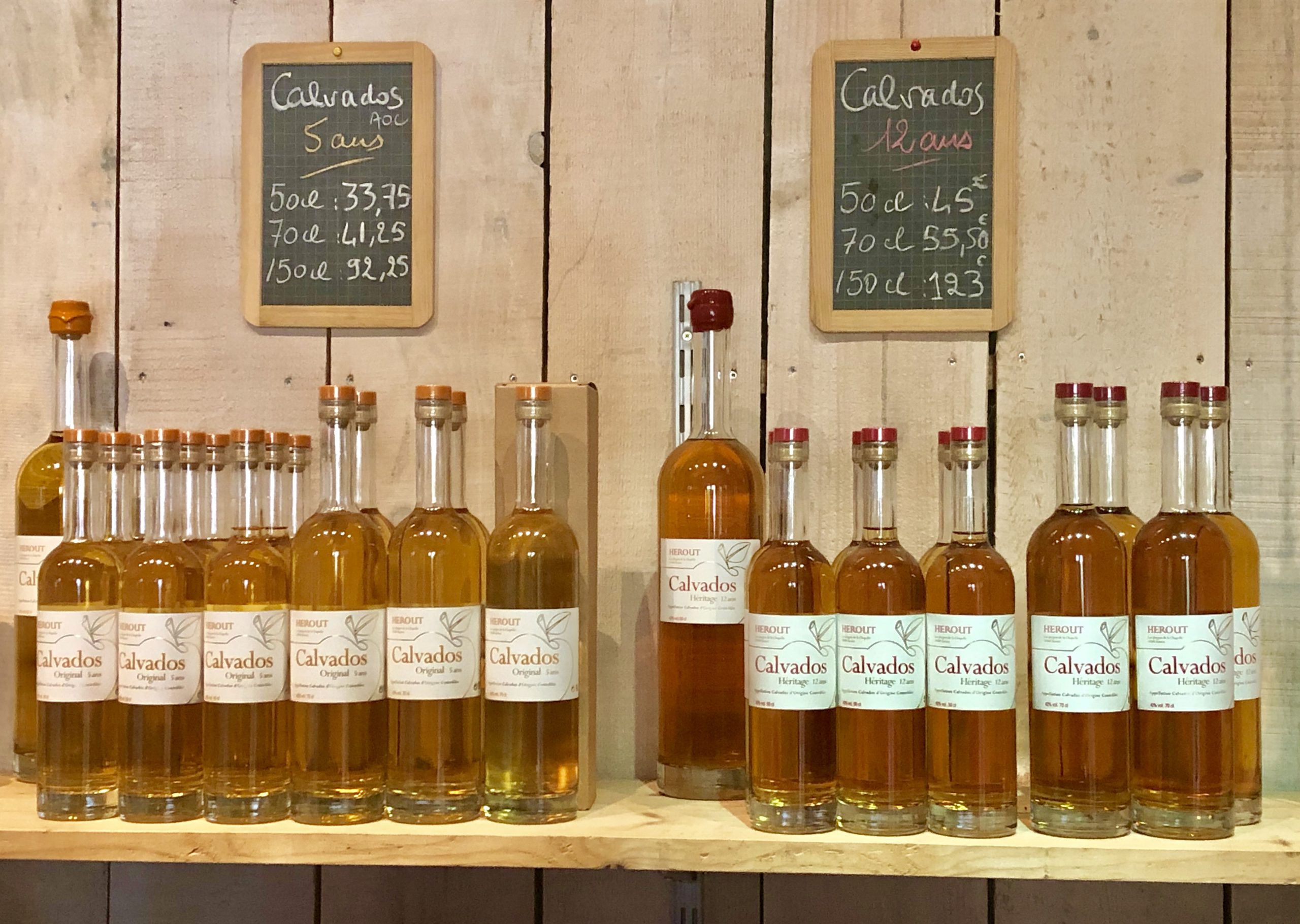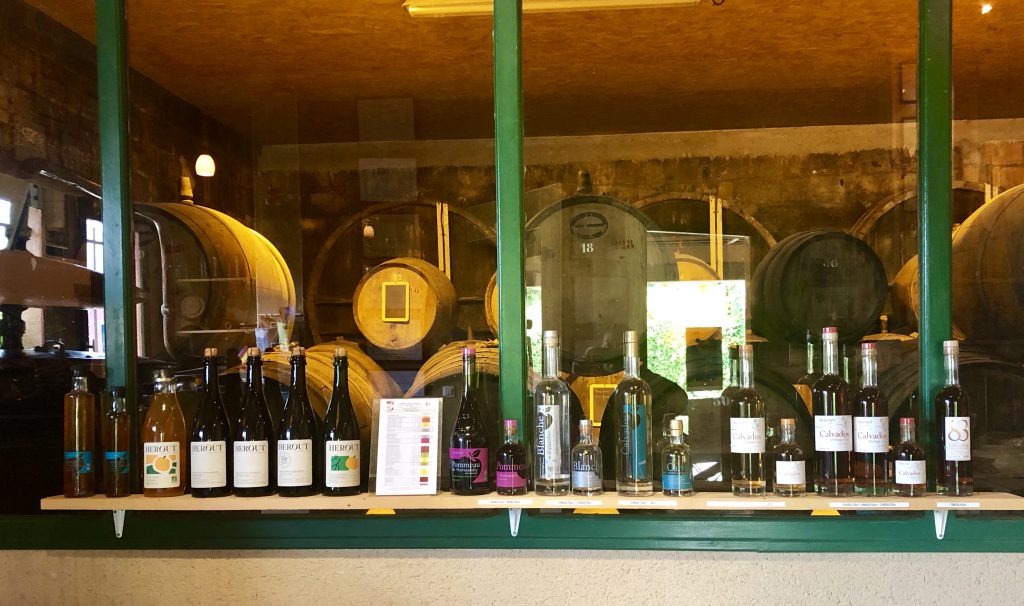Cider, Calvados and Camembert are the three famous Cs of Normandy. You can now also buy all three specialties in Germany. But to get the true Norman taste on your tongue, you have to taste the products here on site, directly from the producer, with the Norman wind in your face.
This is particularly true of Calvados. The region's artisan products cannot be compared with the industrial goods on German supermarket shelves. Calvados was originally called "Eau de Vie", the water of life. It tastes a little different from each distillery, each has its own individual recipe.
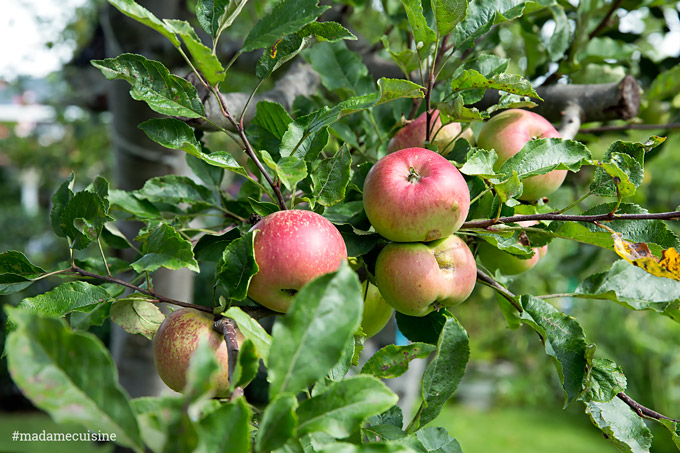
A brief history of Calvados
Would you have known? Calvados originally comes from... the Cotentin. While in Germany the name for the drink is often equated with the département, the original version "Eau de Vie de Sydre" comes from the peninsula. The father of the spirit was a young nobleman, Gilles de Gouberville from Le Mesnil-au-Val, a hamlet in the Val des Saire. The cultivated nobleman was not only familiar with the sword, crossbow and plow, he was also considered to be extremely adventurous. In his diary, he recorded everyday occurrences, including the distillation of cider into brandy - the first written record of Norman brandy. The lord of the manor received a royal chartered distilling right for his creation. However, he was probably not the first distiller to transform the apple into the true nectar of the gods. The Gauls of Normandy and Brittany are said to have already known the secret.
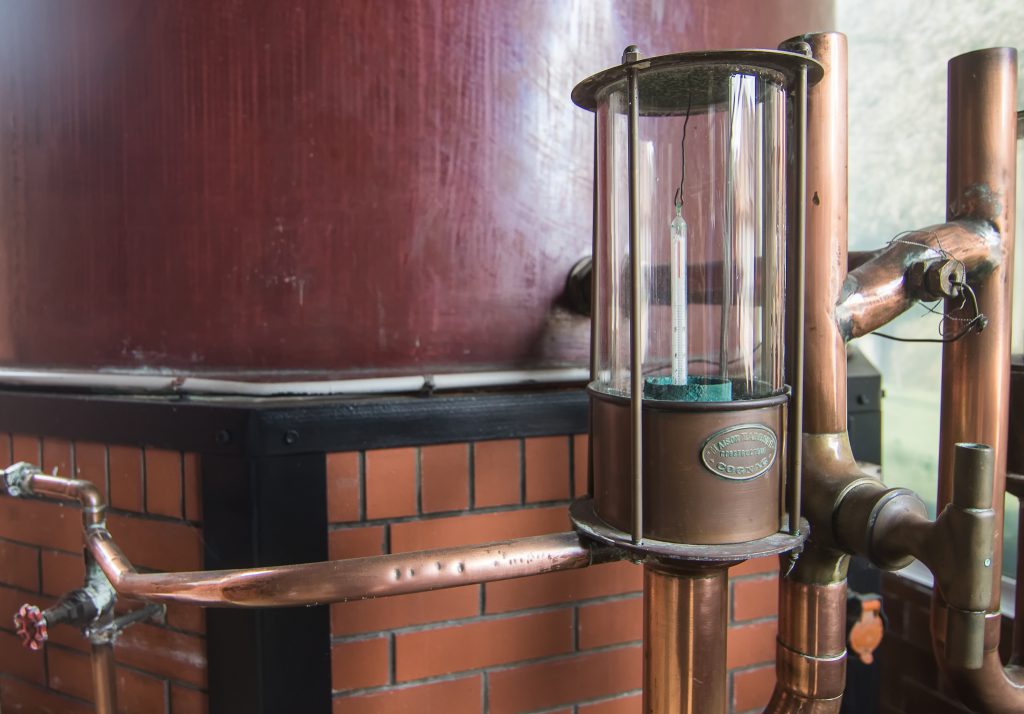
Real momentum The water of life only gained real momentum with the French Revolution, which which allowed every farmer to distil the apples he grew, albeit only to a limited only to a limited extent: farmers were allowed ten liters per year. farmers were allowed ten liters per year. In the 19th century, the the name for the Calvados department for apple brandy became established. The fact that it received an A.O.C., a protected designation of origin, is indirectly due to the German occupation of France. of France. This was because the German military administration ordered the confiscation of all spirits production facilities. of spirits. Exceptions were only made for Cognac and Armagnac, whose production was subject to special controls. The Minister of Agriculture at the time was a Norman and sought a and sought a similar protected status for the national drink of his homeland. for the national drink of his homeland. In 1942, Calvados Pays d'Auge was granted recognition as an "Appellation d'Origine Contrôlée" (AOC); the Calva from the other Calva from the other regions of Normandy was at least awarded an Appellation d'Origine Réglementée" (AOR).
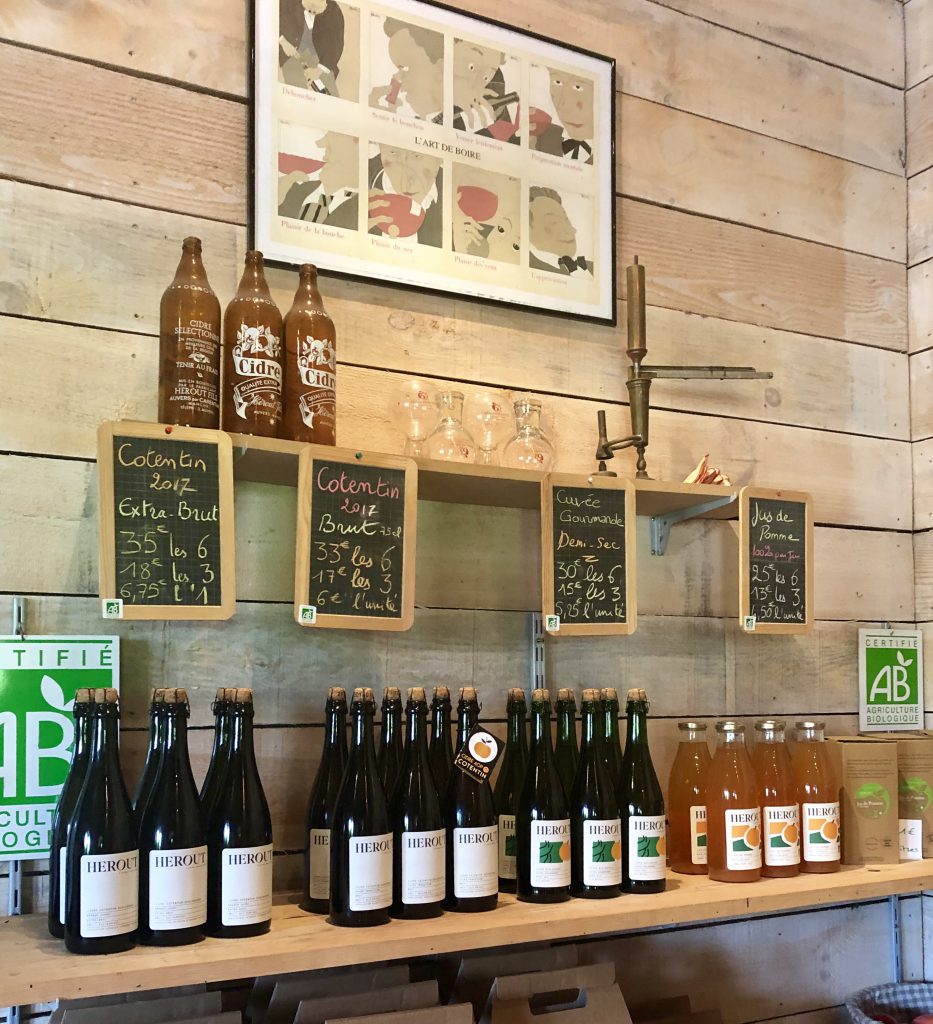
But the war, or rather the end of the war, changed everything. Many orchards had been destroyed by the carnage between Allied and German troops. And people had completely different concerns than preserving liquid cultural heritage. As in the old days, they probably only burned for domestic use. Except in the area of Domfront in the Orne, where moonshine and alcohol smuggling were still the order of the day for many years.
Calvados - a Norman cultural asset
The image has changed today, the Norman distillers attach great importance to the production of the production of excellent fruit brandies that can stand comparison with cognac or whisky.
Today there are three protected designations of origin (A.O.C.) for Calvados:
- Calvados,
- Calvados Pays d'Auge and
- Calvados Domfrontais.
The latter is characterized is characterized by a high pear content of at least 30 percent. For a brandy to be called Calvados, the entire production production process, from harvesting to preparation and distillation distillation must take place entirely in the production area. Of the 110 apples grown in Normandy, only 48 apple varieties are officially approved for the production officially approved for the production of Calvados. Ideally, the blend consists of for the characteristic Calvados flavor consists of 40 percent sweet, 40 percent bitter and 20 percent sour apples. Between cider and Calvados are two distillation processes and several years of storage in oak barrels oak barrels, which gives each distillate its unmistakable flavor. taste. The longer a Calvados is allowed to mature, the rounder and softer its taste becomes.
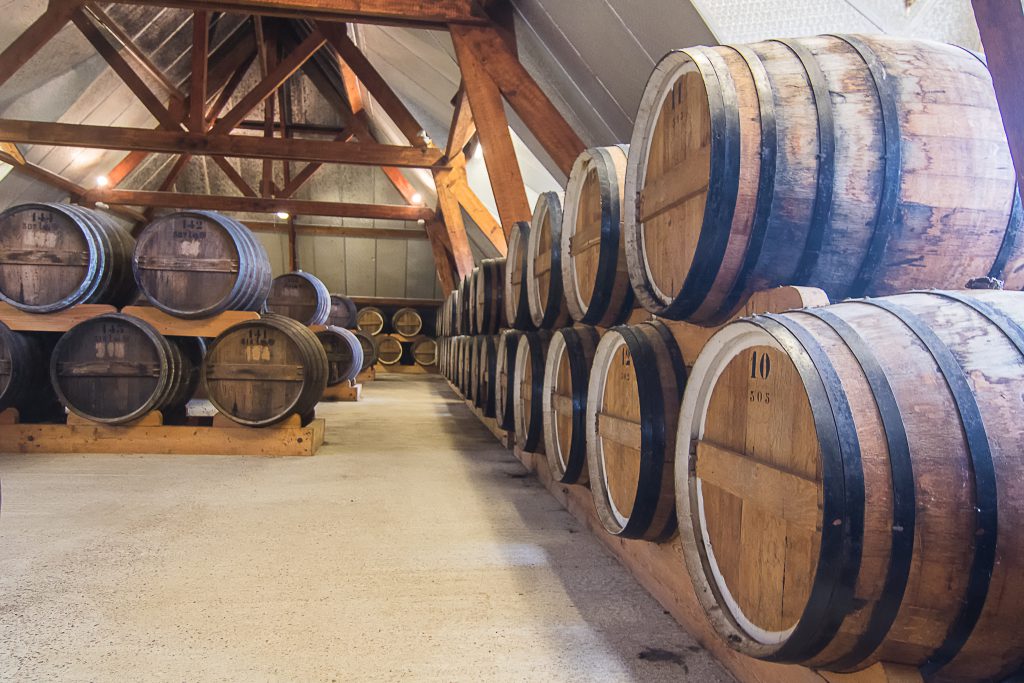
Today, the drink Calvados stands for the preservation of cultural heritage. Many distillers still travel the countryside with their mobile distillery to distil the farmers' apples directly on the farm, but this tradition is threatened with extinction. With a bit of luck, however, you may still spot such mobile distillers in the marshes around our Maison les Grues vacation home in winter and spring, zooming through the countryside in front of you.
Enjoy Calvados the right way
But enough theory, when and how do you actually drink Calvados? True Normans will tell you that Calvados can be enjoyed on any occasion. After all, Calvados is said to have almost magical powers and is considered a cure-all for many ailments. Traditionally, however, it is served between the courses of a meal, with connoisseurs referring to it as the "Norman hole" to make room for the next dish. Calva is also suitable as a digestif. The optimum drinking temperature is 16 to 18 degrees. You should use so-called noising glasses or special Calvados glasses for drinking. Ideally, the latter should have a lid so that the various aromas in the glass can fully develop. Under no circumstances should you simply down the noble drop, but take your time to smell the special spirit of your Calvados and let it slowly melt on your tongue.
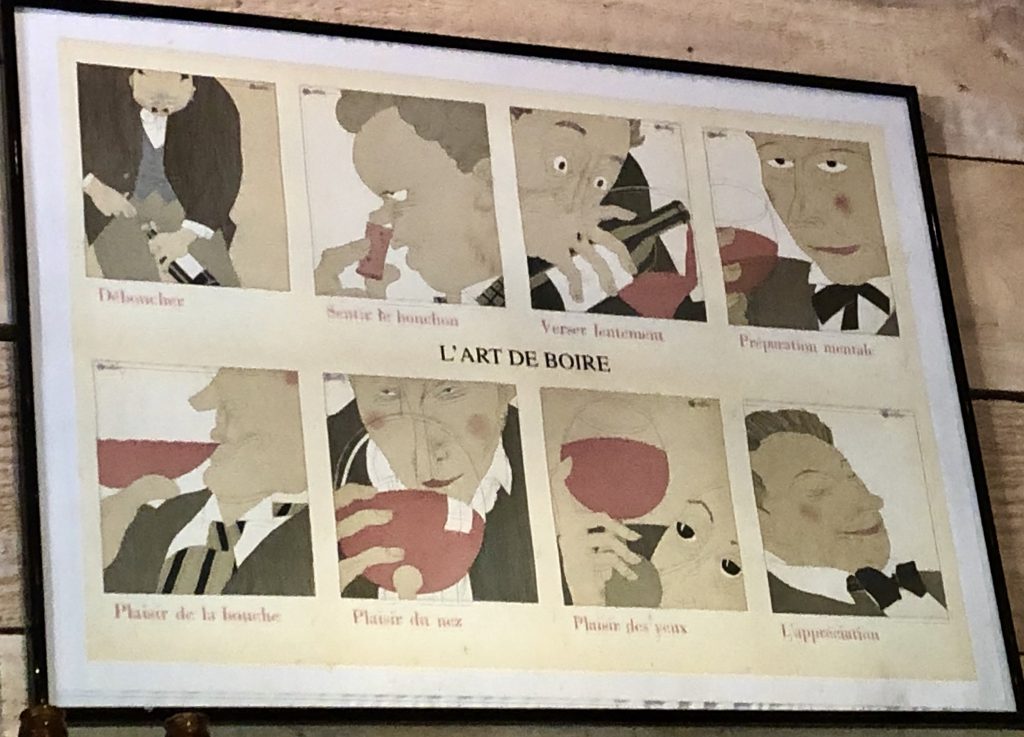
The best Calvados producers around our vacation home in Normandy
If you're on vacation in the Cotentin at our Maison Les Grues vacation home, you can't go far wrong when choosing a Calvados producer. If you're not sure which product or which degree of maturity you like best, it's best to go to a nearby weekly market. Tasting is expressly permitted at the stalls! If you are traveling through the countryside and see signs along the way with "Calvados", it is definitely worth making a detour to the farm.

We also recommend the following regional producers:
Herout
36, route de Cantepie
50500 Auvers
Pierre Guillotte
Vieux Presbytère
12 La Févrerie,
Bolleville
50250 La Haye
Domaine de Rugueville
1 Carrefour des Hougues
50580 Portbail
Text: Barbara Homolka / chiennormandie.de
Photos: Barbara Homolka, Tanja Kranich

